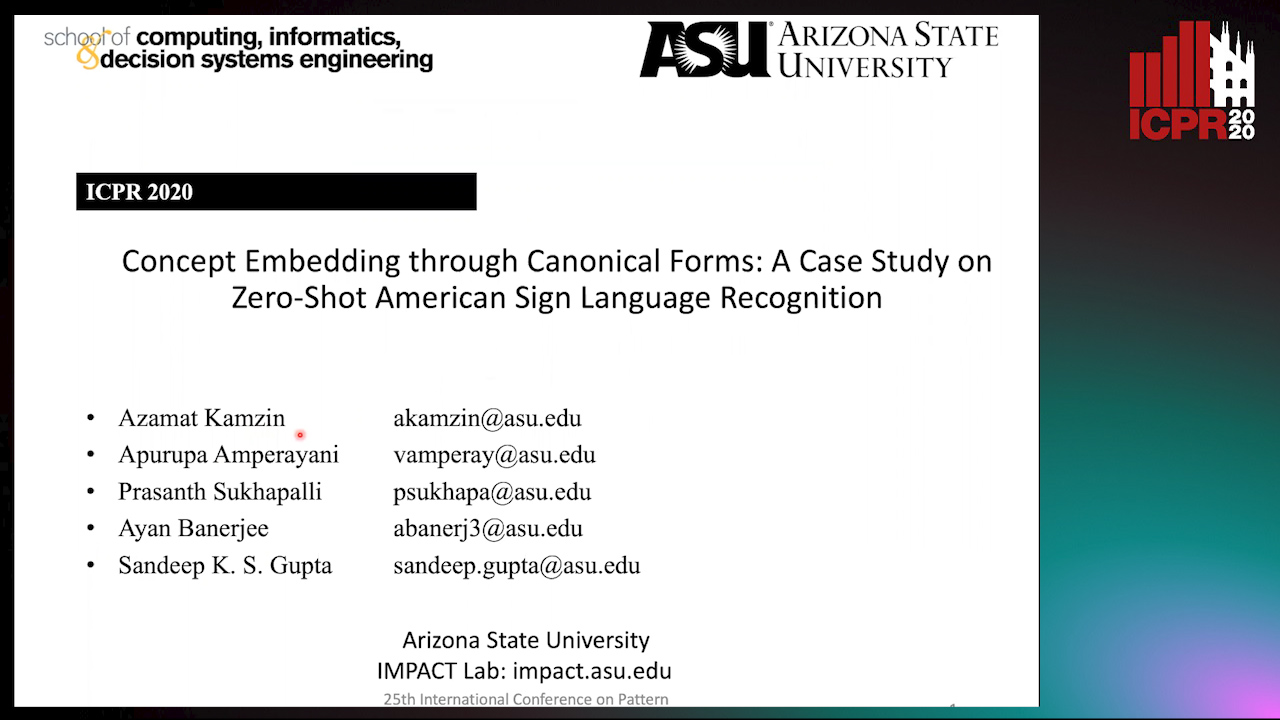Sandeep Gupta
Paper download is intended for registered attendees only, and is
subjected to the IEEE Copyright Policy. Any other use is strongly forbidden.
Papers from this author
Concept Embedding through Canonical Forms: A Case Study on Zero-Shot ASL Recognition
Azamat Kamzin, Apurupa Amperyani, Prasanth Sukhapalli, Ayan Banerjee, Sandeep Gupta

Auto-TLDR; A canonical form of gestures in American Sign Language
Abstract Slides Poster Similar
In the recognition problem, a canonical form that expresses the spatio-temporal relation of concepts for a given class can potentially increase accuracy. Concepts are defined as attributes that can be recognized using a soft matching paradigm. We consider the specific case study of American Sign Language (ASL) to show that canonical forms of classes can be used to recognize unseen gestures. There are several advantages of a canonical form of gestures including translation between gestures, gesture-based searching, and automated transcription of gestures into any spoken language. We applied our technique to two independently collected datasets: a) IMPACT Lab dataset: 23 ASL gestures each executed three times from 130 first time ASL learners as training data and b) ASLTEXT dataset: 190 gestures each executed six times on an average. Our technique was able to recognize 19 arbitrarily chosen previously unseen gestures in the IMPACT dataset from seven individuals who are not a part of 130 and 34 unseen gestures from the ASLTEXT dataset without any retraining. Our normalized accuracy on ASLTEXT dataset is 66 % which is 13.6 % higher than state-of-art technique.